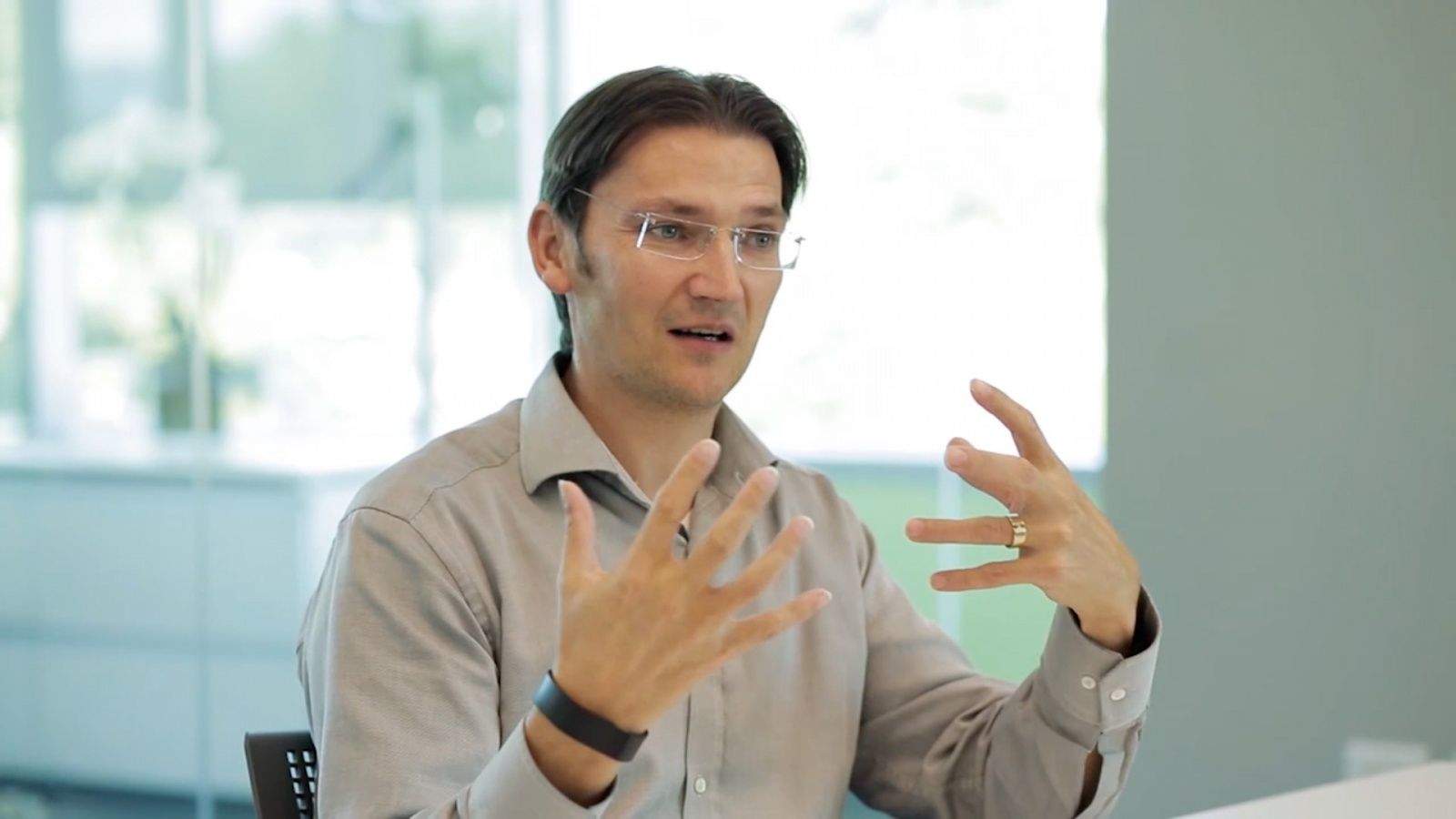Johann Jungwirth is a new Apple employee with one of the world’s most unbelievable job titles.
Until the middle of last year, Jungwirth headed up the big Mercedes-Benz R&D facility in Silicon Valley that, among other things, is responsible for the futuristic self-driving car you see below. (The astonishing Mercedes F 015 is very real, BTW).
Jungwirth was hired by Apple last September and given the title of “Director of Mac Systems Engineering,” according to his LinkedIn page. The title appears to be total hogwash. Jungwirth spent his entire 20-year career working on connected cars, not computers.
Apple is famous for obfuscating about its new hires to throw off competitors and journalists, and the company is reportedly working on a top-secret electric car. If Apple is interested in the stuff Jungwirth has worked on, it’s going to be a wild ride.
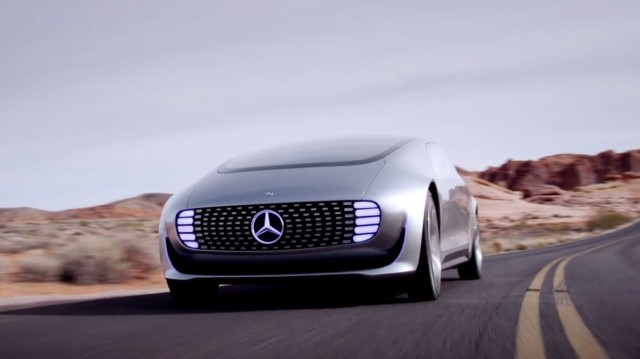
Trained as an engineer, Jungwirth has worked with Mercedes-Benz parent company Daimler since October 1997. Most of his career has been concerned with telematics, infotainment and connected car technology. Before he headed up the Mercedes R&D lab, he was Mercedes’ “VP of Connected Car, User Interaction & Telematics.”
Now he is supposedly working on Mac systems engineering at Apple, “focusing on building great Mac products.”
I’m highly dubious. Apple appears to be getting heavily into auto technology, and may be exploring its own electric car. Apple already has experienced car designers on staff, and has set up a secret R&D lab staffed by “hundreds” of workers, according to reports by the Financial Times and The Wall Street Journal.
Recent leaks say Apple’s “Project Titan” is a radical reinvention of the minivan, and that the company is working on a secret project that “will give Tesla a run for its money.” Mysterious vans bristling with cameras and other sensors have been spotted driving around California.
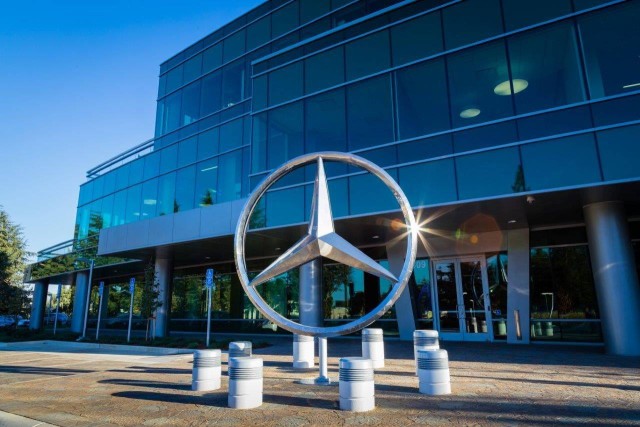
While Jungwirth’s role in Apple’s possible automotive plans is not clear, the R&D lab he formerly led has been exploring auto technology for more than 20 years. Established in 1995, Mercedes’ R&D center was the first Silicon Valley think tank established by a big automaker.
It is located in Sunnyvale, close to the campuses of Facebook and Google. The three-story, 72,000-square-foot facility houses about 170 people and includes a garage, plus hardware and software labs. There’s also a large studio “where designers and engineers work collaboratively on full-scale prototype models and concept cars of the future,” according to the company.
Researchers are working on dozens of technology project areas, from smartphone integration and new UIs to driving-assistance systems. Other areas of research include new battery technologies and vehicles powered by fuel cells. They are connecting cars to smartwatches, developing smart cars that recognize their drivers, and working on advanced telematics systems that communicate traffic conditions to the cloud and then back to cars around them.
At International CES last month, Jungwirth helped Mercedes introduce several auto technologies to the U.S. market. In the video below, recorded at the show, he talks about advanced telematics systems that upload and share driving data via the cloud.
The car, he says, is becoming part of the Internet of Things, allowing it to interact with a variety of other connected systems, from smartwatches to smart homes. He also talks up semi-autonomous driving technologies, which Mercedes is already adding to cars.
“There are three trends that I follow with great attention: one, developments surrounding electric vehicles, two, car sharing and three, the leading importance of the law on autonomously driven vehicles,” he said in a recent interview.
At CES, Jungwirth’s R&D lab also debuted the F 015, a mad-bonkers self-driving car that resembles an aluminum bar of soap — or Apple’s famous no-button, multitouch mouse.
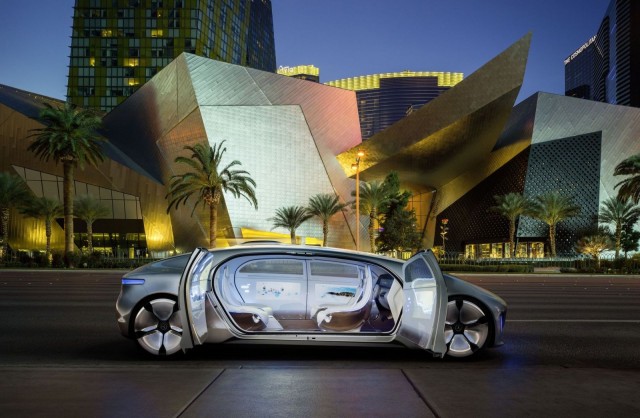
The “F 015 Luxury in Motion” car is more like an old-fashioned horse-drawn carriage than a modern car. Driven autonomously, the front seats no longer need to face forward. They can be swiveled around to face the back seats, creating a communal space that looks like a stagecoach — albeit an ultra-modern, LED-lit one with premium sound and eye-tracking flatscreen TVs.
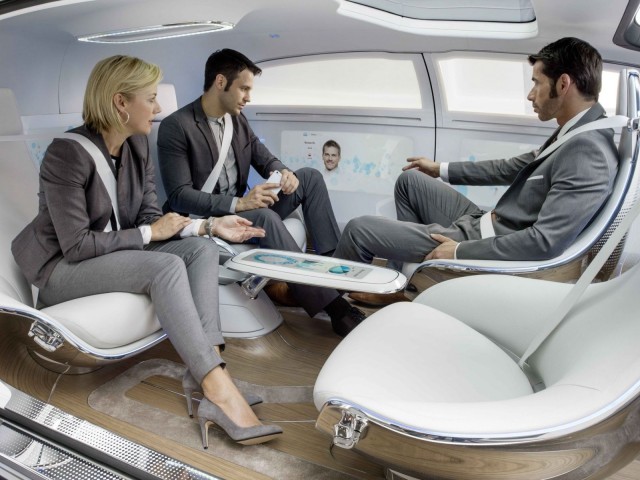
If you think it looks fake, here’s video of the F 015 driving itself down the Las Vegas strip. Yeah, it’s slow, but that’s to make sure the crowd of gawking rubberneckers gets a good look.
Mercedes’ history of automobile innovation
Mercedes has long been a leader in new car tech. From the very first car in 1886, when Mercedes-Benz founder Karl Benz was awarded a patent for his Motorwagen, the German automaker pioneered such innovations as the electric-powered car (1906), independent suspension (1931), crumple zones (1957), anti-lock braking (1978) and smart keys (1997).
Last year, the company sent a robot-driven S-Class across Germany, retracing the 60-mile route that Bertha Benz, wife of Karl Benz, took in 1888 to test her husband’s invention. The car made it from Mannheim to Pforzheim without a human touching the wheel.
The company began experimenting with self-driving cars back in the mid-1990s. Plans were shelved, however, because of legal hurdles and perceived consumer resistance. The company slowed research in the area because government regulators and drivers weren’t ready for robots to take the wheel 20 years ago.
The future is catching up fast though, though. Mercedes already offers a limited autonomous driving technology in Europe.
Mercedes’ Stop&Go Pilot allows the car to drive itself in gridlock. When the car is crawling along in stop-and-go traffic, it lets the driver take his or her hands off the wheel. It can stop and move forward as necessary, following the vehicle ahead, and can also follow a lane — but works only when going less than 6 miles per hour. At higher speeds, it monitors whether the driver’s hands are on the wheel.
What’s Apple up to?
So, why would Jungwirth — who was apparently a key cog in the Mercedes-Benz innovation machine — suddenly start working on computers at Apple? Cult of Mac asked him about his new job but did not hear back from him prior to publication.
Maybe he was simply hired for his technical knowledge and management skills. Or maybe, after decades concentrating on automobiles, he’s been moonlighting as a Mac geek and boning up on OS X!
